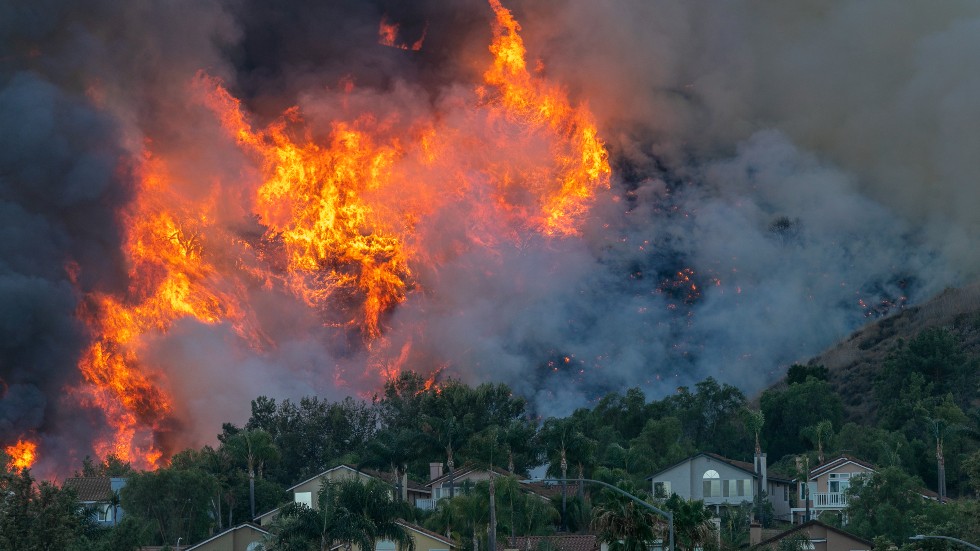Equilibrium — Presented by NextEra Energy — Flaming shipwreck wreaks havoc on annual sea turtle migration

Welcome to Equilibrium. Subscribe to the newsletter here: digital-stage.thehill.com/newsletter-signup.
Four hundred dead sea turtles with burned and corroded shells. A dozen dead dolphins. Melted fiberglass and tons of plastic pellets covering 50 miles of formerly pristine Sri Lankan beach.
These are the lingering impacts of a fire that sank a container ship owned by X-Press Feeders off the coast of Sri Lanka, CBS News reported, marking what the country’s environmentalists are calling the worst ecological disaster in the nation’s history — particularly as it came at the annual height of turtle migration. While we still don’t know what caused the fire, The Associated Press has noted that 81 of the ships’ containers contained toxic chemicals, and Bangladesh has filed suit for $40 million.
The X-Press Feeders disaster is a glaring example of the growing danger that shipping traffic places upon our oceans and coastal ecosystems. But every dolphin washing up on shore, poisoned by that sunken ship, is also a sign of the way harm happens out of sight, in the vast abyss left by our ignorance of the systems that sustain us.
On that cheery note, the West is contending with a terrible mystery of its own: Will this fire season be even worse than last year’s? And at Columbia University, a group of academics and community activists confront their own wrenching question that may soon affect the West: When is it time to leave a home that climate change is rendering uninhabitable?
For Equilibrium, we are Saul Elbein, operating out of Washington, D.C., and Sharon Udasin, based in Boulder, Colo. Please send tips or comments to Saul at selbein@digital-stage.thehill.com or Sharon at sudasin@digital-stage.thehill.com. Follow us on Twitter: @saul_elbein and @sharonudasin.
Let’s get to it.
‘A Sierra Nevada without forest’: West faces consequence of a century of avoiding fires

Last year’s brutal fire season, which smashed records for fire size and economic damage across the American West, seemed to have one silver lining: Land that burns once usually doesn’t burn again quickly, giving firefighters and communities a reprieve.
No such luck, Marc Castellnou, one of the world’s premiere wildland fire scientists, told Equilibrium on Tuesday. “When the rain came last year, I thought, ‘We’ll have time to learn, that’s it.’ But this year, again, it’s a complete disaster. It’s going to be a long, long summer.”
Heat dome cooks the West: On the second official day of summer, a giant invisible dome covered the entire U.S. Northwest like the lid of a pressure cooker, keeping hot air from escaping as the sun beats down, as Ryan Maue, a meteorologist once picked by former President Trump to head the National Atmospheric and Oceanic Administration, wrote on Twitter on Monday.
That means, Maue wrote Tuesday, “If you were planning for the weekend in Portland [Ore.] yesterday, then you were looking at 95°F and 99°F. Now, both days forecast to 102°F … [with] potential for much hotter yet,” and potential highs in the 120s in California, Washington and Oregon.
Systems under stress: Dangerously elevated temperatures across the West have been accompanied by drought. “The Pacific Northwest across to the Northern Plains are seeing conditions go from bad to worse,” according to the National Integrated Drought Information System, with more than 75 percent of topsoil across many Western states ranging from “short to very short.”
Meanwhile, as Zack Budryk reported in The Hill on Friday, Lake Mead, a key reservoir for the West, is at just 37 percent capacity — an all-time low. The state of the diminishing reservoir, Budryk wrote, highlights “that existing [water management] systems are based on a climate that, because of warming, no longer exists.”
That’s the same problem facing forests in the U.S. and Europe, Castellnou told Equilibrium. Thanks to long running policies that eradicated low-intensity fire from forests, allowing fuels to build up, “we have been investing for 100 years to create an ecosystem that is out of adaptation to the climate.”
ADAPTING THE FOREST TO FIRE?
A forever war on fire: In some regions, adaptation has borne fruit. In Rocky Mountain National Park, Michael Booth wrote for The Colorado Sun, 20 years of planned tree thinning and prescribed burns — which remove fuel from forests, robbing the inevitable fires of energy, speed and power — gave hotshot crews facing enormous blazes in 2020 a well-prepared battlefield that let them save the park.
That sort of “backbreaking” work — which involves wielding a chainsaw in triple-digit temperatures — is part of a $500 million package spent by California to reduce fuel from its forests, Brian K Sullivan and Mark Chediak reported Saturday for Bloomberg Green.
And the U.S. Forest Service reported in May that it would be scaling up similar “fuel treatments” by a factor of three or four, according to Nichola Groom of Reuters.
Doing things differently: On Monday, Sen. Mitt Romney (R-Utah) introduced legislation calling for “the creation of a wildfire commission that would review federal wildfire policy and make recommendations to Congress,” Connor Richards reported for Utah’s Daily Herald.
“The fires are becoming bigger, the loss of life is more significant,” Romney told a press conference in Draper, Utah, “and continuing to do the things the way we’ve done them in the past doesn’t make a lot of sense.”
But with the National Interagency Fire Center reporting that 47 large fires have already burned 519,761 acres across the country, coupled with escalating temperatures, arid soil and resources stretched thin, this fire season could present “a very real danger,” as Sen. Ron Wyden (D-Ore.) told Equilibrium.
Just how dangerous? Castellnou said that conditions remind him of Australia’s brutal 2019-2020 fire season, which burned 72,000 square miles, or roughly the size of Washington state, killing more than a billion animals. Those fires “deleted ecosystems” from Australia’s Blue Mountains. “And this year, the situation is there for the whole [Californian] Sierra Nevada. It could be left without forest,” he said.
A MESSAGE FROM NEXTERA ENERGY
As the world’s largest producer of wind and solar energy, NextEra Energy is pioneering innovation on green hydrogen – the solution for deep decarbonization of hard-to-abate sectors. See how at NextEraEnergy.com.
Pulling back: The difficult choice of when to retreat before a changing climate

Devastating wildfires are just one of the many climate disasters that threaten American communities. Hurricanes sweep across coasts; tornadoes tear down homes; and tidal flooding leaves households homeless. To cope with some of these threats, which tend to disproportionately impact the country’s minority and lower-income population, scientists and policymakers are evaluating the role of “managed retreat” and how this strategy might help communities adapt to changing climate conditions.
Managed retreat, at its core, involves the purposeful and coordinated relocation of people and infrastructure away from hazards — often in response to climate disasters such as floods or wildfires. At a conference devoted to managed retreat Tuesday — organized by The Earth Institute at Columbia University’s Climate School — participants explored at what point communities decide to leave.
“Long-tail” risks: Communities and policymakers must consider “long-tail” climate risks — the kind of dangers that may be low-probability, but which would be so devastating if they occurred that they must be considered,” according to Radley Horton, a research professor at the Earth Institute at Columbia University and an organizer of the event.
Accounting for such long-tail risks helps us cope with “bigger climate blind spots that we can’t see,” Horton said. Examples of such blind spots include the nonlinear effects of climate change — the idea that every additional degree of warming means exponentially greater risk than every previous degree.
Ties to the neighborhood: Karen Blondel has been a resident of public housing in Red Hook in Brooklyn, N.Y., since 1982. Blondel didn’t choose to live in Red Hook, a peninsular Brooklyn enclave known for its warehouses, brownfields and flood risks and walled in by the Brooklyn-Queens Expressway. But when Hurricane Sandy engulfed her adopted community in 2012, she understood the need to fight for the neighborhood’s survival. “Because we were such a small-town type of neighborhood, we were able to quickly organize around each other,” she said at the conference.
“We don’t want to talk about managed retreat, but we know we have to,” Blondel added.
MANAGED RETREAT VS. LEGACY OF ENVIRONMENTAL DISCRIMINATION
A painful history. It’s not lost on people like Blondel that the inequities of the recent past are the reason she and her neighbors have to consider leaving in the near future.
Red Hook, Blondel understood, was built as an isolated community, due to 1930s “redlining” policies — through which the federal government demarcated “risky” or “undesirable” areas in which residents could not qualify for federal mortgage loans — based on race. At the time, Red Hook was deemed an undesirable area almost in its entirety.
There is significant overlap between areas with flood risk and those that were deemed dangerous by the federal government’s redlining policies, according to Deborah Morris, an urban planner and former official at the New York City Department of Housing Preservation and Development. In nearby Queens, she explained, housing that could not be financed through traditional banks was built in the most flood-prone areas of the borough.
“Blacks have been pushed around the country from a bungalow to a tenement with rats to public housing, but never to anything new,” Blondel said. “We’ve been bull-penned by policies and redlining.”
Looking ahead: As communities and organizations work to integrate managed retreat strategies into their planning policies, significant funding will be necessary to minimize vulnerability, Morris emphasized at the Columbia conference. Researchers and policymakers are exploring just how they might make this happen.
- Also at the conference, Saleemul Huq, the director of Bangladesh’s International Centre for Climate Change and Development, advocated for the development of public-private insurance products that could help delay climate migration — tools that “engage in supporting these poorest communities in adapting to the impacts of climate change, and [that are] increasingly having to deal with genuine actual loss of damage because of human induced climate change.”
- In a recent special issue of Science, researchers grappled with managed retreat in a series of journal articles — charting “a roadmap” for strategic, managed retreat and assessing human habitability and migration.
We’ll have more about managed retreat, and how vulnerable communities are struggling to survive hostile climate conditions, on the site Wednesday.
A MESSAGE FROM NEXTERA ENERGY
We’re pioneering innovation on green hydrogen – the solution for deep decarbonization of hard-to-abate sectors. See how it can create jobs, accelerate economic growth and more at NextEraEnergy.com.
ROUND-UP
TUESDAY TIFFS

People and things to be careful of offending: Cambodia’s king, Bermuda’s tax system and Australia’s care of the Great Barrier Reef.
Cambodian environmental activists face up to 10 years in prison for “insulting the king”
- Five members of Cambodian group Mother Nature have been arrested after documenting pollution running off into Tonlé Sap, a freshwater lake in the middle of Phnom Penh, the BBC reported.
- “The evidence collected by the police was an insult to the king,” a Cambodian prosecutor told Reuters, referring to a 2018 law that makes such insults a crime. He did not elaborate.
- On Monday, Patrick Murphy, the U.S. ambassador to Cambodia tweeted he was “Very troubled to hear of the arrests of more environmental youth activists. Documenting pollution is a public service, not terrorism.”
- But as Saul wrote for Vice Magazine in 2016, Cambodia — a de-facto one-party state where high-ranking military and police officers often moonlight as illegal timber mafias — is a dangerous place to raise awareness about environmental crime.
Bermuda balks at global minimum tax deal
- During the Group of Seven (G-7) conference in early June, the seven world leaders agreed to support a global minimum corporate tax.
- This strike against tax havens like Bermuda, Akshat Rathi reported in Bloomberg Green, was a quiet blow for sustainability, as it would keep capital from fleeing poor countries that need it to fund climate adaptation.
- The Bermudans don’t see it that way. “Bermuda has a right to determine for itself what it thinks is an appropriate tax system for its jurisdiction,” Curtis Dickinson, Bermuda’s finance minister, told the Financial Times.
- Dickinson argued that unlike other “tax havens,” Bermuda has become a real financial center — providing a magnet for climate finance, as insurers and reinsurers decamp for the island to be closer to their clients.
- “You have this crazy island that is probably the most important financial market for climate change that we can all imagine,” Andrew Engler, the chief executive of Kettle, a company that analyzes wildfire risk and is now based on the island.
Australia fighting UN’s plans to downgrade Great Barrier Reef’s World Heritage status
- In a draft report on Monday, the UNESCO World Heritage Committee recommended that the Great Barrier Reef be added to the group’s list of world heritage sites in danger, which includes 53 sites, The Hill reported.
- The committee said that the reef suffered from coral bleaching events in the past several years, triggered by global warming.
- But Australia is poised to fight back. Environment Minister Sussan Ley said she called the UNESCO director-general to express the government’s “strong disappointment” and “bewilderment,” according to the AP.
- “This decision was flawed. Clearly there were politics behind it,” Ley said. “Clearly those politics have subverted a proper process and for the World Heritage Committee to not even foreshadow this listing is, I think, appalling.”
{mosads}In the coming days, we’ll be looking deeper into the overlap of managed retreat and wildfire, examining what the future might hold for the residents of a sizzling West.
We’ll also look at climate finance, and the question of how — and whether — financial institutions and publicly traded companies should be required to use their power to help steer the transition off carbon.
Until then, this is Equilibrium. See you Wednesday evening.
Copyright 2023 Nexstar Media Inc. All rights reserved. This material may not be published, broadcast, rewritten, or redistributed. Regular the hill posts









